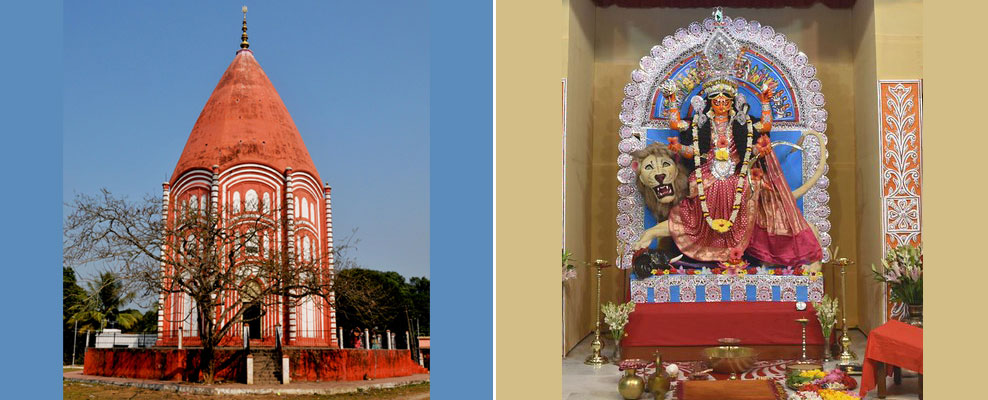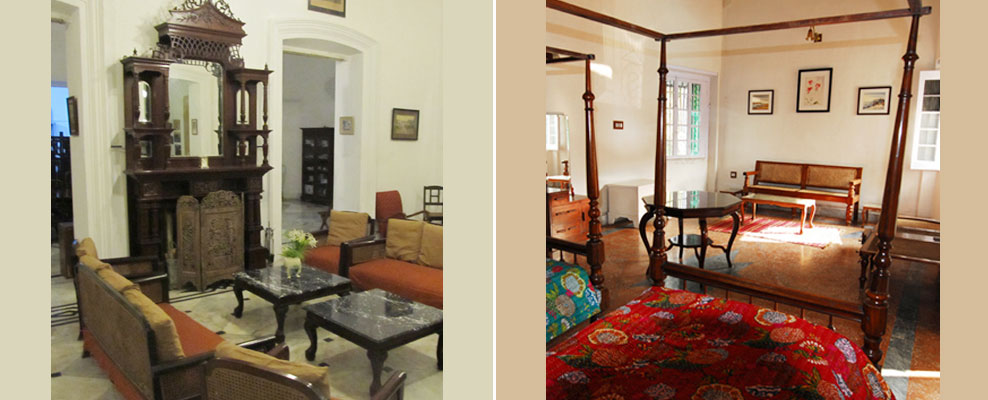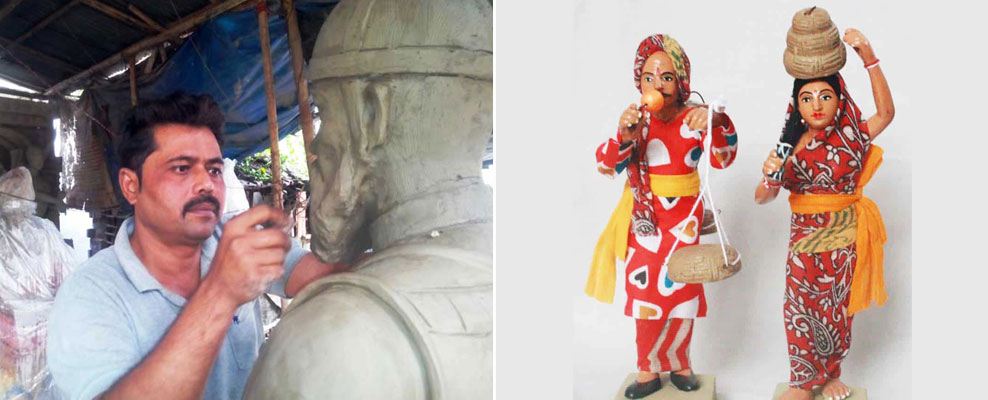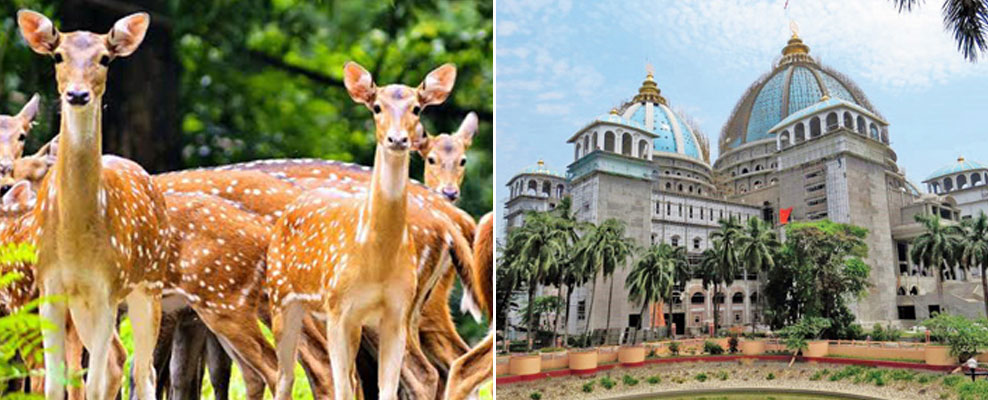The clouds were waiting to break water.
Gray, yet not quite gloomy, the Monsoons were playing hide and seek this year.
Bengal with its vivid greens and riverine scapes is probably at its prettiest in that season of expectant drizzles.
The best time to set out to explore.
And this time our destination was the district of Nadia.
Nadia of historic roots,
Beyond colonial creations.
Historically Nadia probably can be traced back to the Sena Dynasty.Situated at the confluence of the Bhagirathi and Jalangi rivers, the city was reportedly founded by Ballalasena sometime in 12th century.
Till date there is excavation site there called BallalDhibi.
Nadia is further noted as a pilgrimage site for the Bhakti movement founded by Shri Chaitanya, that swept through Bengal and beyond in the 15th century uniting cast and creed in a unified Krishna Consciousness.
Nadia is also the land of BhabanandaMazumdar and Maharaja Krishnachandra.
Maharaja Krishnachandra was a great patron of literature. Bharatchandra, one of the famous poets of the 18th century, was his court poet. It was at Krishnachandra’s request that Bharatchandra composed his masterpiece, Annadamangal which remains an iconic part of the history of Bengali literature. Other men of letters at his court included the ascetic poet Ramprasad Sen, who is famous for his ShyamaSangeet or devotional songs for Godess Kali. Gopal Bhaar, known far and wide for his wit and humor was also part of his court. Children even today are regaled with stories about Gopal Bhar.

Krishnachandra spent huge sums of money to promote Sanskrit learning at Navadwip, the birth place of Sree Chaitanya. He established a large Shiv temple at Shivnibash which became a revered religious destination. He was the first to introduce Jagaddhatri puja in Bengal. It was at his initiative and encouragement that some reputed potters from Natore moved to Nadia and even today the clay dolls of Nadia are beyond compare.

The idea of exploring this beautiful historic place was like going back in time on a treasure hunt. A four hour drive from Kolkata and we drove into the historic Balakhana Estate at Maheshgunj.
The Maheshgunj Estate, Balakhana was built in the late 18th century as a Neel Kuthi or ‘Indigo Bungalow” by an Indigo planter, Mr. John Angelo Savis. Indigo was the prime colonial cash crop of the time, but its forcible cultivation by the British resulted in the famous Indigo Uprising by the workers and peasants. By the 1870s Balakhana was put up for sale by it’s the then owner, (grandson of the original owner) and it was bought in 1875 by Mr. BiprodasPalchoudhuri, a landowner of eminence, dealing with tea, bell metal, microfinance etc. Wealthy traders of the 18th century, the Palchoudhuris soon established their estates in Santipur, Narayanpur and Maheshgunj. They went on to build a new fortune as pioneer planters of tea gardens.
The Maheshgunj Estate Balakhana is retained and looked after by the family and they have recently opened their doors to guests.
Five beautifully anointed rooms with lovely antique furniture await to welcome guests.
The room that I stayed in had an original four poster, the traditional “palanka” where I had to climb up a small flight of stairs to get to bed.
The long white marbled verandah is another sight to behold. It runs through the entire frontage, supported by tall columns and overlooks the beautiful gardens.
The Verandah is strewn with easy chairs and marble tables and on two ends there are two jhoola beds, ideal for curling up for an afternoon siesta or just day dreaming.
It is here that the current custodian Mr.RanodhirPalchoudhuri and his lovely wife welcomes guests and ensures that they feel at home, regaling them with stories of yore.
Just as warm and wonderful are the mealtimes with the family as they serve delicious home cooked meal after meal, full of local variety and flavor.
Although it is wonderful to bask in the old world charm at Balakhana, yet a trip to Nadia would not be complete without visiting some of its unique sites all within close proximity of Maheshgunj Estate.

Krishnanagar, the district capital is barely a half hours drive away.
A visit to Krishnanagar must include a trip to Ghurni, the artisan village.
Being an avowed patron of art and culture, Maharaja Krishnachandra brought families of potters from Dhaka and Natore and settled them in Ghurni.
These artisans specialized in making clay dolls unique in their making and finish, and they represented a breakaway from the traditional form. Fruits, fish, insects, animals, birds, and of course the entire pantheon of gods and goddesses, are even now, exemplary in the detailing. Exhibitions of Krishnanagar dolls have been held overseas. Ghurni clay models have won medals and certificates at international exhibitions.
Not too far away from here is a massive excavation site popularly known as BallalDhibi. This is located at Bamanpukur and historians believe that the ruined palace belonged to BallalSena. However, some others recorded the discovery as a Shiva temple. Miniature shrines around the main structure were dated between the 10th and 11th centuries.

Just about 24 km away from Krishnanagar lies the Bethuadahari Wildlife Sanctuary. The sanctuary has feed-pits located allover where you can spot the deer and wild hogs. There is also a Gharial (Indian Alligator) Rehabilitation Centre here.
One of the most historic places in Nadia district is the ancient town of Nabadwip.
It is a holy place where Chaitanya Mahaprabhu was born. A center of learning and philosophy in medieval India, the city is still noted for its traditional Sanskrit schools
Adjacent to Nabadwip is Mayapur. The headquarters of ISKCON is situated here
The ISKCON Chandrodaya Temple has become an important religious site. This is one of the most important temples established by the International Society for Krishna Consciousness. It is always buzzing with devotees who come here from domestic and foreign shores to pay their respects to Sri Prabhupada, the founder of ISKCON.
Nadia is also famous for the handloom sarees of Santipur and Phulia. The handloom weaving style unique to this region is famously known as Santipuri Sari. Post partition many skilled weavers from Tangail in Dhaka, immigrated into West Bengal and settled around the cities of Shantipur and Phulia . Over the years it has become renowned in producing hand-woven fabrics sold throughout the country.
Any discussion on any place in Bengal needs to end on a sweet note. Nadia, having such a rich historical legacy, even it’s most popular sweetmeat brims with historical sweetness.
The famous Sarpuria is mentioned in Chaitanya Charitamrita written 500 plus years ago. It is said that Advaita Acharya sent Sarapuriya to Chaitanyadev. Even today the best Sarpuria can be found at Adhar’s sweetmeat shop in Krishnanagar, the sweetmeat shop founded by Adhar Chandra Das who was the family member of the creator of Sarpuria.
Indeed a visit to Nadia is a historical treasure trip full of creative and spiritual sweetness.
Photo credits: Banner Left: Sarpuria_FB; Banner Center: Rajbari Krishnanagar – Tripadvisor.in; Banner Right: Sarpuria_food.ndtv.com
